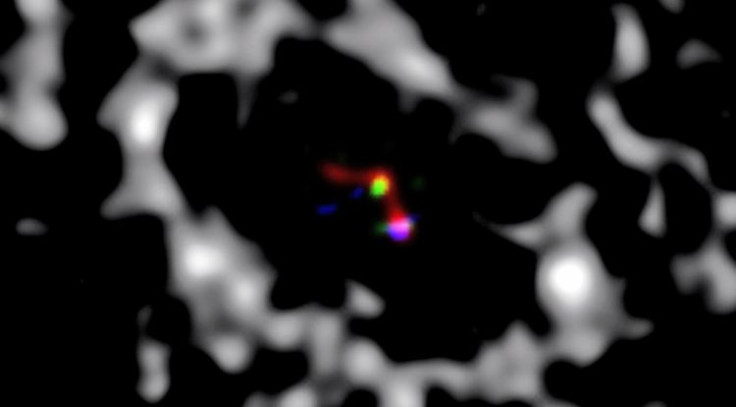Scientists Photograph The Birth Of A Planet For The First Time Ever

Of the nearly 2,000 young and old exoplanets known to humans, only a handful have ever been photographed. That would explain why scientists have not been able to directly observe the formation of a planet -- until now.
According to a study published Wednesday in the journal Nature, a team of scientists has, for the first time ever, not only directly observed a planet being formed, but also captured a photograph of the process taking place around a star 450 light-years from Earth.
“No one has successfully and unambiguously detected a forming planet before,” Kate Follette, a former graduate student at the University of Arizona, who, along with graduate student Stephanie Sallum, led the research, said, in a statement Wednesday. “There have always been alternate explanations, but in this case we've taken a direct picture, and it's hard to dispute that.”
The two researchers were working on separate PhD projects, but decided to focus on the same young star -- LkCa15. And, despite the disk of gas and dust obscuring the alien star, they managed to capture the first photo of a baby planet being born through a gap in LkCa15’s disk.
These circumstellar disks are common around newborn stars, and provide the raw materials for planets, which are formed as a result of accretion of dust and debris left over from the star’s birth.
“The reason we selected this system is because it’s built around a very young star that has material left over from the star-formation process,” Follette said, in the statement. “It’s like a big doughnut. This system is special because it’s one of a handful of disks that has a solar-system size gap in it. And one of the ways to create that gap is to have planets forming in there.”
The observation was made possible through the use of high-powered telescopes -- such as the Large Binocular Telescope (LBT) in southeastern Arizona that boasts two 27-foot-wide primary mirrors, and the university’s Magellan Telescope. The researchers also employed a new technique to look for protoplanets, wherein they searched for the light emitted by hydrogen as the gas falls toward a newly forming planet -- its “hydrogen alpha” fingerprint.
The process produces a signature red glow, “just like a neon sign,” Laird Close, a University of Arizona astronomy professor and Follette’s graduate adviser, said in the statement.
“That single dark shade of red light is emitted by both the planet and the star as they undergo the same growing process,” Follette added. “We were able to separate the light of the faint planet from the light of the much brighter star and to see that they were both growing and glowing in this very distinct shade of red.”
© Copyright IBTimes 2025. All rights reserved.






















